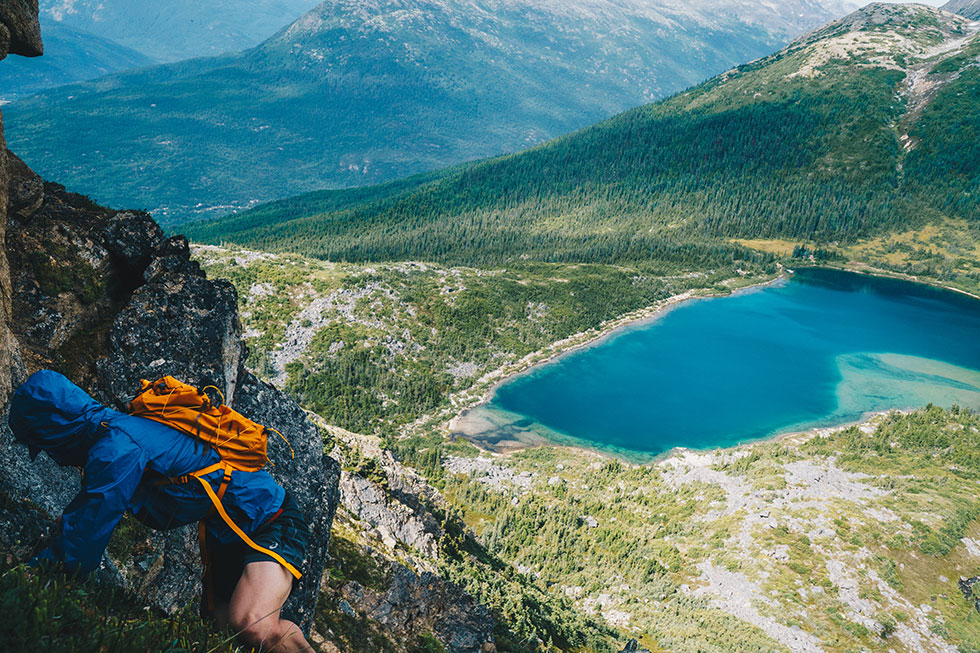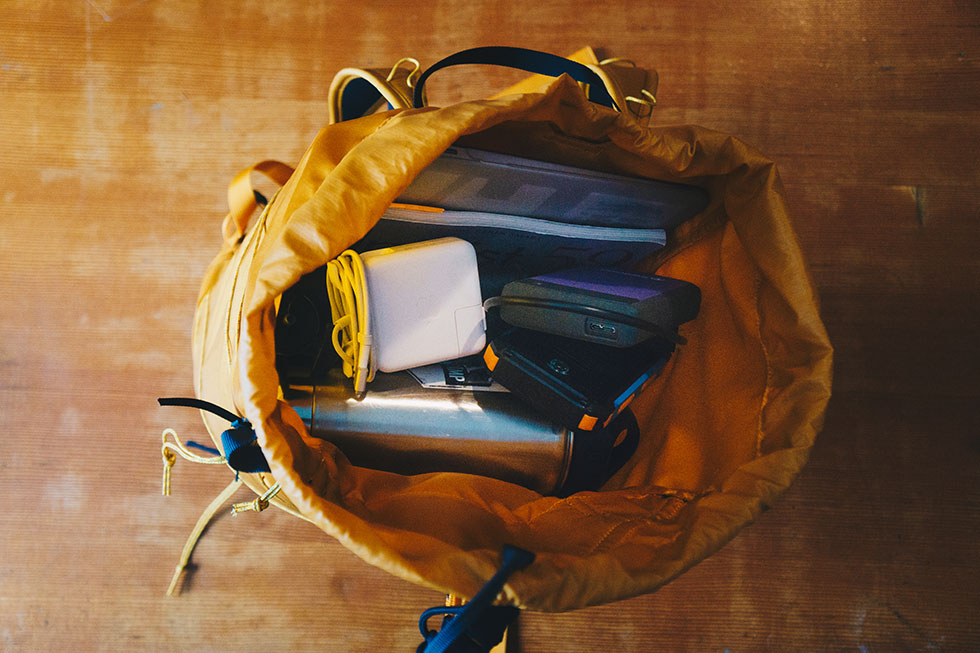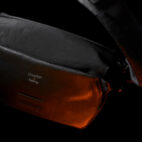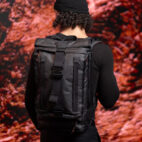
Backpacks

As a traveling photographer with a passion for mountains, I often find myself for months at a time in harsh environments. I look for tough carry options that can bring me and my gear through formidable conditions and back home, time and time again. I had the honor of sending the Arc’teryx Cierzo 18 through the wringer everywhere from the Tongas Rainforest to the alpine scrambles of Southeast Alaska. This pack is an unabashed lightweight pack that gets by with the bare minimum for people who prioritize performance over comfort. This is not to say it isn’t comfortable, but it definitely has a smaller margin of comfort than other bags (more on that later). The Cierzo 18 is perfect for summit missions and situations where weight matters more than ergonomics. The Cierzo can be your only daypack for day missions from everything between summer alpine conditions and cafes if you are willing to look past a few of this specialized pack's downsides.

Specifications
- Name: Cierzo 18
- Brand: Arc'teryx
- Format: Backpack
- Measurement:
- Capacity: 18L
- Weight: 13 oz/ 0.375kg
- Zippers:
- Material: N100mr-HT nylon 6,6 mini-ripstop and N210p-HT nylon 6,6 plain weave
- PriceUS$ 99
Who It Suits
Since the Arct’eryx Cierzo is essentially a durable sack with narrow straps it lends itself well to simple tasks, whether that be alpine missions or quick grocery runs.
Who It Doesn’t
Those who prefer to have pockets for everything. This is a bag that prioritizes accessibility and weight over anything else. Arc’teryx has done away with traditional features the "average" daypack might have, opting against built-up compression straps and water bottle pockets in favor of simplicity.

Design
Looks
The Arc'teryx Cierzo is a handsome bag and does not hide its alpine DNA. This bag will feel most at home in mountain towns but with a subtler color it could do just as well in the concrete jungle. I reviewed the Madras colorway, a bright marigold orange, but there are subtler colorways (Inkwell, a midnight blue and Janus, a slate gray).
"This is a bag that prioritizes accessibility and weight over anything else."
Construction
As a bag meant to be stashed alongside other alpine gear and bashed against rock faces, the Cierzo toes the line between being lightweight and durable. The seams are impeccably finished and inspire confidence.
Hardware
The Cierzo's defining features are the Swiftcord boa system and the cinch top. This pack’s identity is characterized by what it does without rather than what it has.
Materials
Arc'teryx used N100mr-HT nylon 6,6 mini-ripstop and N210p-HT nylon 6,6 plain weave for the body of the pack and the bottom of the pack, respectively. This material choice and ripstop weave makes for a robust bag and a perfect adventure carry.

Features
Straps and workflow
The chest straps and waist straps carry the same DNA as the rest of the bag and offer a no-nonsense, no frills option for weight transfer. They tend to dangle when not in use, which may bother some users.
Different colored chest and waist straps might not seem like that big of a deal, but on the fly, chucking the bag on and fumbling for straps, the color differentiated yellow (waist) and black straps (chest) make getting back on the move a bit smoother. Visually IDing the straps and grabbing them is that much easier when there is nothing other than position to differentiate the two straps. Imagine doing this thousands of times and saving a second each time. Over the lifetime of the bag, that’s quite a few more seconds to be enjoying the landscape rather than asking yourself, “chest or waist?”
"The color differentiated yellow (waist) and black straps (chest) make getting back on the move a bit smoother."
The Cierzo’s minimalist features extend to the shoulder straps, which are not padded and offer no suspension system. These attributes lend to body hugging fit and high resolution when it comes to moving with the body and not lagging like some clumsier packs are prone to do. This also means it takes a few seconds to adjust to the narrow straps if you are accustomed to more built-up straps. They start not quite at the top of the pack and end at the bottom, which means any slightly heavier items (like cameras) at the top will quite easily make the bag feel top heavy and unbalanced. However, packing such items right at strap level would address that issue. They can start to dig a bit when packed too heavily, but nothing that would start to irritate. I did many 6+ hour alpine missions with the bag and finished the days with nothing more than some red on skin, nothing that other bags don’t also do.


Quick note: The sternum straps can be removed or adjusted along the webbing running through the strap.
The Swiftcord boa system adjustment is a great way to quickly adjust the compression of cables running along the outside of the Cierzo. This gives the bag compression abilities that provide a snug carry, which is important when on the move in an outdoor space. The boa system also allows for quick stashing of jackets on the outside as I drop elevation and then easy access for when I start gaining again. The structureless bag lends itself well to conforming to whatever you happen to stash under the outer straps. However, for the same reasons, if you aren’t vigilant about where you place awkwardly shaped or dense objects like cameras or sunglasses, the pack can unbalance. I found reaching into the front zipper compartment to access the adjustment tab strange at first, but once it became part of my workflow I didn’t look back.
"If you aren’t vigilant about where you place awkwardly shaped or dense objects like cameras or sunglasses, the pack can unbalance."
The loops on the bottom of the pack (made with the same material as the Swiftcord) are meant to be used for ice axes, but I don't see myself using those for the intended purpose come winter because their thinness does not inspire confidence, especially for holding something as crucial as an ice axe.

Performance
Space and Access
Adventure Setup:
Regularly clocking vertical feet in the Alaskan alpine environment, I would reach for the Cierzo when I wanted to roll with more gear or was anticipating longer days. A typical setup for such missions would be a hydration bladder, food, camera, mini tripod, space blanket, headlamp, a buff, gloves, down jacket, rain jacket, a softshell, and long pants. As a top loader, I had to prioritize the packing order and how it would carry, with items least likely to be used on the bottom and bulky items in the center. If I was using a hydration pack, it would become the “frame" of the bag and protect the other items in my bag from sweat I would inevitably be generating. One of the main downsides of the super lightweight priorities of the Cierzo is that without a vented back panel, it does not dump heat easily during high output activities. It has no hydration integration but it swallowed up my Osprey 1.5L hydration pack quite easily. I would actually recommend some type of hydration pack with a spine to add a bit of structure to an otherwise floppy bag.

Day-to-day Setup:
Using the Cierzo to ferry my everyday gear, the same features that are advantages and disadvantages in the alpine environment make themselves apparent in day-to-day use. A structureless body means that my Mac Air becomes the “frame” of the bag around which everything else like jackets and sunglasses pack in. Because it has no back panel or thicker bottom, the edges of the laptop are prone to sticking through the material. To get around this, I would stuff an emergency sweater or jacket at the bottom to protect the laptop in case I dropped the bag or set it down a little too harshly. I could often fit a laptop, power cable, hard drive, battery pack, a few cables, a magazine, thermos (for coffee, of course), water bottle, sunglasses case, down jacket, and a softshell quite comfortably if I was conscious about how I packed. The Cierzo holds all this gear surprisingly well for the 18 emblazoned on its front. Packing well becomes a way of life with this simple top loader if you are like me and not used to being so intentional with where the water bottle goes versus the power cable.


Comfort
The Cierzo 18 is not the most comfortable pack out there and as mentioned before it struggles a bit with weight distribution across the straps when under load, but it wasn’t designed with comfort in mind. As a peak ascent pack, its foremost mission is to bring you to the top and back to camp in light and fast fashion. For the everyday, it excels in bringing you to the office or the cafe in record time, unencumbered by weight, assuming you aren't packing much weight.
"One of the main downsides of the super lightweight priorities of the Cierzo is that without a vented back panel, it does not dump heat easily during high output activities."
Going on grocery runs with the Cierzo 18 really demonstrated how narrow the straps are. Without suspension or much surface area for the shoulder straps, dense items like milk and eggs tend to drag the pack back, causing straps to dig. Ferrying food a couple of blocks from the store is no big deal but carrying heavier items on an all-day mission can get a bit uncomfortable.
I eventually got used to the thin straps, using the Cierzo 18 to carry my everyday setup, but the bag never disappeared on my back because the shoulder straps were always there to remind me. In the alpine, I did not mind it at all, but as an everyday bag I would prefer slightly beefier straps to dissipate the load.
Durability/Weatherability
I had no problem with durability and was comfortable with dropping the Cierzo down against abrasive rock I find so often in these peaks during a food break or to grab my camera. Through the day-to-day city to mountain lifestyle this bag goes through, it has picked up a bit of dirt here and there, but no rips or punctured fabric have surfaced.

When it is sunny one week and raining all of the next, adventures must be had regardless of weather, and the Cierzo is a good bag if you’re willing to put up with the drawbacks that come from its lightweight DNA. Because of the open top, Swiftcord cinch-to-close feature of this bag, I would bring a dry bag with me to protect my camera, electronics, and other moisture sensitive items from the often fickle Southeast Alaskan weather systems. The top can be cinched down and a buckle (for climbing rope) that goes over the top of the system can secure the closure, but water will still trickle through in a downpour. Being in Southeast Alaska means that I don’t have to shower test the bag, and can instead just step out my door on any given day. Although it has some type of DWR coating, the pack will eventually begin taking in water. I see this not as a bombproof river pack, but as a lightweight alpine pack so I am willing to make the sacrifice of lighter weight for less water resistance when speed and carry ease is paramount.
"I had no problem with durability and was comfortable with dropping the Cierzo down against abrasive rock."

"The top can be cinched down and a buckle (for climbing rope) that goes over the top of the system can secure the closure, but water will still trickle through in a downpour."

Alternatives to Consider
For mixed weather conditions or slightly more built-up bags, look at Mountain Hardwear’s offerings kitted out in OutDry technology to keep the weather out for longer (a claimed 24 hours of direct rain).
Verdict
Arc’teryx have created a winning bag here when it comes to the weight-conscious crowd or anyone who wants to benefit from the alpine-minded design. The Cierzo is certainly a handsome bag with the DNA of "light and fast” alpinism and the flexibility to thrive anywhere from tableside to campside if you are willing to put in a little more work in packing than is typical in a daypack.






 Carry Awards
Carry Awards Insights
Insights Liking
Liking Projects
Projects Interviews
Interviews









